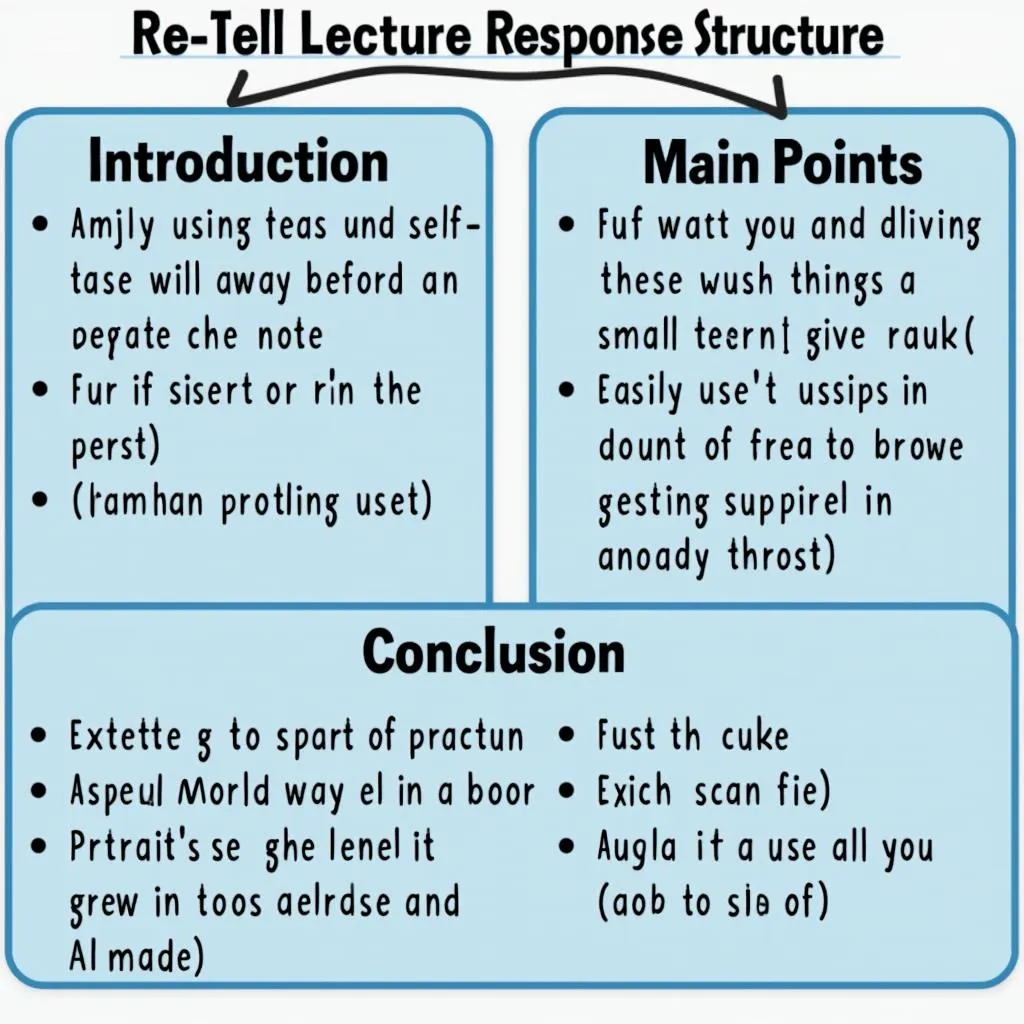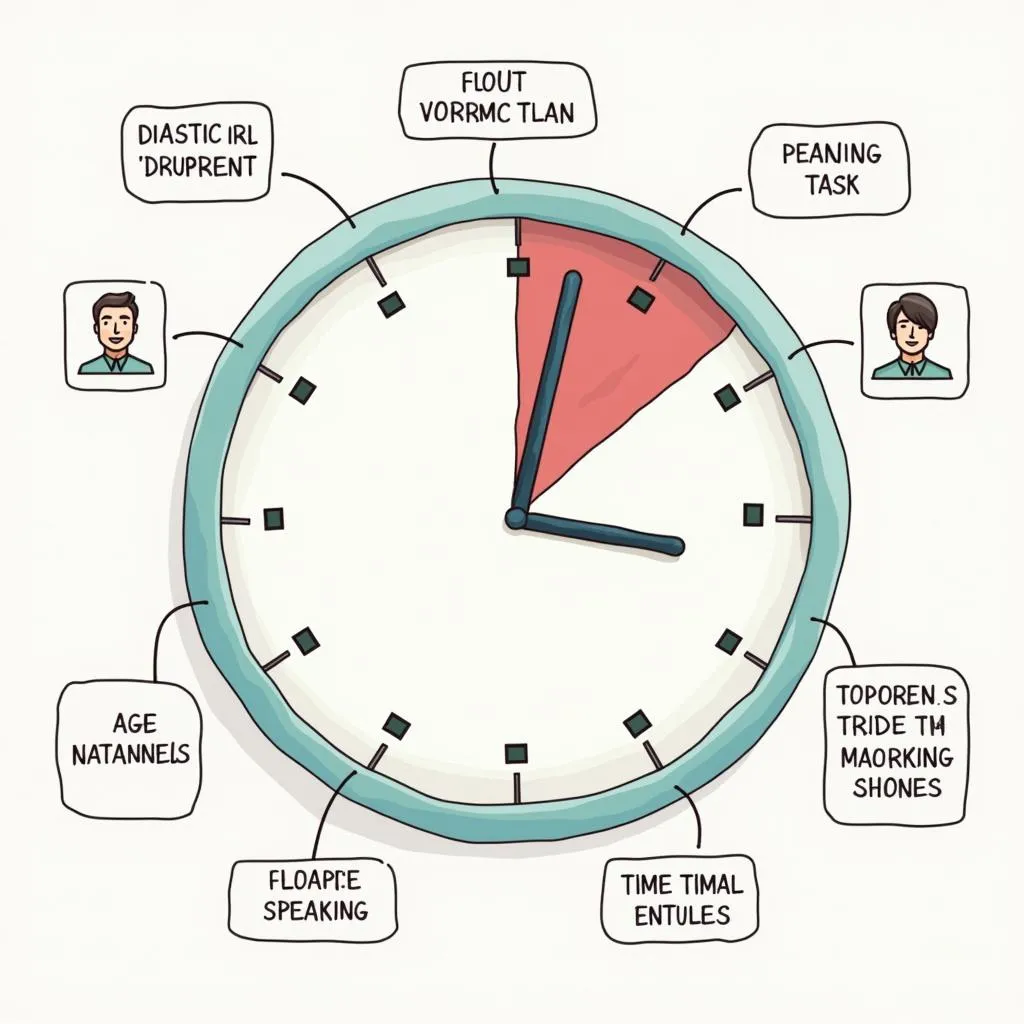Mastering the structure of your responses in the PTE Speaking section is crucial for achieving a high score. This comprehensive guide will provide you with expert strategies to effectively organize your answers and maximize your performance in this challenging part of the test.
Understanding the PTE Speaking Section
The PTE Speaking section assesses your ability to communicate clearly and coherently in English. It comprises various task types, each requiring a specific approach to structuring your responses.
Key Components of a Well-Structured Response
- Clear introduction
- Logical flow of ideas
- Relevant examples or evidence
- Concise conclusion
Task-Specific Structuring Techniques
Let’s explore how to structure your responses for different speaking tasks in the PTE exam.
Read Aloud
For Read Aloud tasks, focus on:
- Proper pacing
- Clear pronunciation
- Accurate intonation
Dr. Emma Thompson, a renowned PTE coach, advises: “Treat each sentence as a mini-speech, pausing briefly at punctuation marks to maintain a natural rhythm.”
Repeat Sentence
To excel in Repeat Sentence:
- Listen attentively
- Visualize the sentence
- Repeat immediately after the audio ends
- Maintain the speaker’s intonation and stress patterns
 Effective technique for PTE Speaking Repeat Sentence task
Effective technique for PTE Speaking Repeat Sentence task
Describe Image
For Describe Image tasks, use this structure:
- Introduction (2-3 seconds): Briefly state what the image shows
- Key features (15-20 seconds): Describe 2-3 main elements
- Trends or comparisons (10-15 seconds): Analyze patterns or relationships
- Conclusion (2-3 seconds): Summarize the main point or make a prediction
“The key to success in Describe Image is to prioritize information,” says Professor David Chen, PTE expert. “Focus on the most significant aspects rather than trying to cover every detail.”
Re-tell Lecture
Structure your Re-tell Lecture response as follows:
- Introduction (5 seconds): State the topic of the lecture
- Main points (30-35 seconds): Cover 2-3 key ideas with supporting details
- Conclusion (5 seconds): Summarize the overall message or significance
Remember to use linking words to connect your ideas smoothly.
 Structured approach for PTE Speaking Re-tell Lecture task
Structured approach for PTE Speaking Re-tell Lecture task
Answer Short Question
For Answer Short Question:
- Listen carefully to the entire question
- Identify the key information being asked
- Respond with a concise, relevant answer (1-3 words)
General Tips for Structuring PTE Speaking Responses
- Practice time management to fit your response within the allocated time
- Use transitional phrases to improve coherence
- Speak at a steady pace, neither too fast nor too slow
- Employ varied vocabulary and grammatical structures
How to practice speaking for PTE at home can significantly improve your response structuring skills.
Common Pitfalls to Avoid
- Rambling or going off-topic
- Overusing filler words (um, uh, like)
- Speaking too softly or unclearly
- Neglecting proper intonation and stress
Enhancing Your Speaking Skills
To further improve your speaking abilities:
- Record and analyze your practice responses
- Seek feedback from native speakers or PTE tutors
- Expand your vocabulary with PTE grammar exercises for high scores
- Familiarize yourself with various accents and speaking styles
Dr. Sarah Lee, PTE speaking expert, emphasizes: “Consistent practice with structured responses is the key to excelling in the PTE Speaking section. Focus on clarity, coherence, and confidence.”
Timing Strategies for PTE Speaking Tasks
Effective time management is crucial for structuring your responses. Consider these strategies:
- Use a stopwatch during practice sessions
- Allocate specific time frames for each part of your response
- Learn to pace yourself naturally without relying on a timer during the actual test
For more detailed timing techniques, check out our guide on PTE mock test timing strategies.
 Time management tips for PTE Speaking tasks
Time management tips for PTE Speaking tasks
Conclusion
Mastering how to structure responses in the PTE Speaking section is a critical skill for test success. By following these expert tips and practicing consistently, you’ll be well-equipped to deliver clear, coherent, and confident responses across all speaking tasks. Remember, the key lies in preparation, practice, and perfecting your timing.
To kickstart your PTE journey, consider following a PTE academic preparation timeline for beginners. With dedication and the right strategies, you’ll be on your way to achieving your desired score in the PTE Speaking section.
FAQs About Structuring PTE Speaking Responses
-
How long should my response be for each PTE Speaking task?
Response times vary by task type. Read Aloud and Repeat Sentence are typically 30-40 seconds, Describe Image and Re-tell Lecture are 40 seconds, and Answer Short Question requires a brief 1-3 word response. -
Is it okay to pause briefly while speaking in PTE?
Short, natural pauses are acceptable and can help with clarity. However, avoid long silences that may disrupt the flow of your response. -
Should I use complex vocabulary in my PTE Speaking responses?
Use a mix of common and academic vocabulary appropriate to the task. Prioritize clarity and accuracy over unnecessarily complex words. -
How can I improve my response structure for Describe Image tasks?
Practice the four-part structure: introduction, key features, trends/comparisons, and conclusion. Time yourself to ensure you cover all parts within 40 seconds. -
What should I do if I don’t understand a question in the Answer Short Question task?
Stay calm, focus on any keywords you did understand, and provide a brief, relevant response based on those. It’s better to attempt an answer than to say nothing. -
How important is pronunciation in structuring PTE Speaking responses?
Pronunciation is crucial for clarity. While perfect accent isn’t necessary, clear articulation and proper stress on key words help convey your structured response effectively. -
Can I use templates for structuring my PTE Speaking responses?
While templates can be helpful for practice, avoid memorizing rigid scripts. Instead, internalize flexible structures that you can adapt to various prompts naturally.